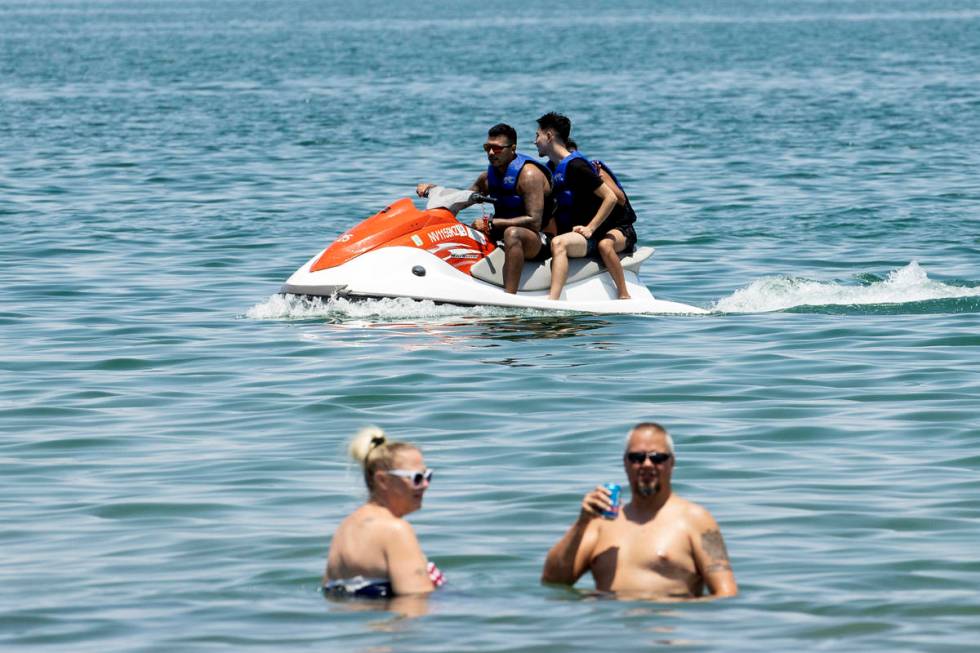Excessive heat can be dangerous if precautions aren’t taken

With high temperatures expected to reach at least 118 degrees at Lake Mead on Saturday and nearly that in the Las Vegas Valley, somehow the word hot is not enough to describe the weather forecast.
The National Weather Service calls it excessive, and it definitely is that, because it is much hotter than is necessary to remind us that we live in the Mojave Desert.
One could call it sizzling, scorching or one of many other descriptive terms, but the bottom line is not only hot, but dang hot. Which means outdoor enthusiasts, regardless of their activities of choice, need to take extra steps to ensure their safety as well as those who recreate with them.
According to the Centers for Disease Control and Prevention (CDC), “around 618 people in the United States are killed by extreme heat every year.” When compared with the overall population of the country that number might seem small, but only when you or a loved one are not one of the statistics.
The good news is there are steps we can take to avoid becoming one of those statistics. We can begin by realizing that each of us is susceptible to heat-related health issues. None of us is immune. Recognizing that will make it easier for us to do what is needed.
Perhaps the best way for us to avoid heat-related health issues is to stay indoors with the air conditioner running. But for most outdoor types, that is not a long-term option.
Though it is a starting point, sooner or later we will be pushed outside by a pending case of cabin fever. Even then, strategic use of air conditioning will help us make it through the day.
When you do move to the outdoors, limit activity to the relatively cooler morning and evening hours. Dedicated striper and catfish anglers, for example, often fish Lake Mead through the night and come off the water early in the morning before it gets too hot and before boating traffic gets too heavy.
Another option is to choose activities that can be done at higher elevations where the temperature is sure to be cooler than on the valley floor. And take advantage of shade whenever possible to stay out of direct sunlight. When combined with even a slight breeze, a little shade can go a long way.
Be sure to take plenty of fluids along on any outdoor foray, even when your destination is a body of water and your chosen activity is water based. You might be surprised to learn that many people do not.
The goal is to remain hydrated while your body is sweating to cool itself. Do not wait until you are thirsty to take a drink. If you are thirsty, your body already is feeling the effects of dehydration.
The CDC also says to avoid sugary or alcoholic beverages because they cause your body to lose body fluid rather than replace it. If you have medical conditions that require limits on your fluid intake, be sure to check with your doctor before heading outside.
Clothing choice can also help to limit the effects of sun and hot temperatures. Do not underestimate the value of long sleeves and long pants and their ability to ward off the effects of the sun. Choose clothes that are lightweight, loose fitting and lightly colored rather than dark.
When you do go outside, it always is a good idea to use the buddy system. People suffering from heat-induced illness often exhibit confused behavior, a symptom a friend will recognize long before the victim does.
Freelance writer Doug Nielsen is a conservation educator for the Nevada Department of Wildlife. His “In the Outdoors” column is not affiliated with or endorsed by the NDOW. Any opinions he states in his column are his own. Find him on Facebook at @dougwritesoutdoors. He can be reached at intheoutdoorslv@gmail.com.